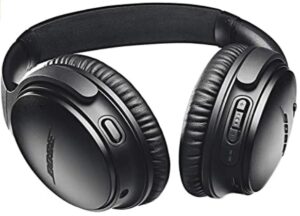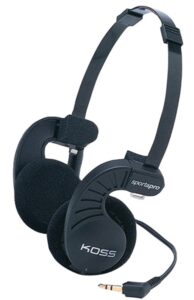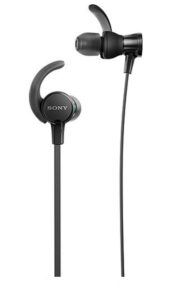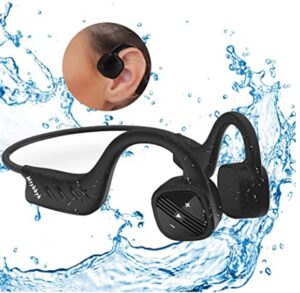There are many things to think about when choosing the best headphones for Marathon training. Most important to decide is whether they should be wireless or wired and whether they should be of the type In-Ear, On-Ear, Over-Ear or Open-Ear. In how to use headphones for great running motivation in the following, we look at the advantages and disadvantages of the different types when deciding the best headphones for running.
Wireless Headphones vs Wired Headphones


Sound Quality:
Wired headphones are generally capable of delivering better sound quality than wireless headphones. Over the past few years, however, the difference has become of less importance and today the ordinary consumer probably cannot hear the difference.
Most of the digital audio files that we stream/play today are compressed to such an extent that it really makes no difference in terms of sound quality whether you choose wireless or non-wireless. You have to be a sound specialist, and play music in very, very high quality, to decide that the sound quality is the crucial point in choosing wireless or non-wireless.
Battery charging: Wireless headphones have the disadvantage that they have a limited battery lifetime so they need to be recharged frequently. Wired Headphones never have to be recharged and are therefore always ready to use.
Portability: Both the wireless and the non-wireless headphones are easy to carry on the run. But if you want to get rid of wires hanging and fluttering in the wind, then wireless Bluetooth headphones are the obvious choice.
Another benefit of wireless headphones is that you can place your smartphone/player wherever you want. It doesn’t necessarily have to be close to your headphones, but can be hidden away in a back pocket or backpack.
Different types of Headphones: In-Ear, On-Ear, Over-Ear, and Open Ear
When You’re looking for new headphones for running you must find a pair that is designed for running/sports. Since these models have an optimized fit that makes them sit where they have to fit in and they are typically made of materials that can withstand sweat, rain, snow, etc.
Below I have made a pros and cons of different types of headphones.
IN-EAR Headphones

In-ear headphones also called “earphones” or “earbuds”, are small headphones that are placed inside the ear, they fit into the ears. They are the most common for sports, and most people already own a pair of these since they are often standard segments following the package when you buy smartphones today.
Advantages: They are very easy to have with you on the run, as they are very small and have almost no weight. Most often in-ear headphones are the cheapest, but of course, you can find top-quality models that are very expensive.
If you wear glasses, in-ear headphones are the best, as both on-ear and over-ear headphones fit very poorly in combination with glasses. Another advantage is that during the cold season you can easily wear a cap or headband on the outside.
Disadvantages: The sound quality is generally a bit poorer than on-ear and over-ear headphones, as they are not large enough to achieve the same depth and quality in the music. For the ordinary consumer is the quality in most cases adequate, and some models deliver superior quality.
It can be a little difficult to find a pair of in-ear headphones that fit your ears perfectly – and if they do not fit perfectly, there is a risk that they will fall out again and again on the runs.
In-Ear headphones has Size-specific fit
Fortunately, there are often different sizes of In-Ear phones and it increases the opportunity to find a pair that fits in perfectly. If you previously have experienced that your In-Ear headphones falling out during the run, you should go for a pair of in-ear headphones with a brace around your ear. This ensures that they do not fall out and you do not compromise on the low weight.
In-ear headphones are not for everyone and many runners find it uncomfortable to have them in their ears over a longer period. Another disadvantage is that many models exclude virtually all other sounds, which is not optimal if you are moving in busy areas.
ON-EAR Headphones

On-ear headphones are somewhat larger than in-ear headphones and, as the name implies, lies on the ears / off the ears.
Advantages: They are relatively light and compact, and the risk of falling off or slipping down is significantly less than in-ear headphones. Most runners will probably find that on-ear is more comfortable than in-ear particularly in longer periods of use.
Another great advantage of on-ear headphones is that they do not shut off any other sound but allow you to hear traffic and the outside world while you run.
Disadvantages: On-ear headphones are not a good choice if you wear glasses and if you are a person who sweats a lot, as the foam may well get moist. But many earphones are designed to withstand this without getting damaged in the long run.
Although on-ear headphones are generally very nice to wear, this type can also become a bit uncomfortable in longer periods of use as they can push a little into the ear.
OVER-EAR Headphones

A very common form of headphones is over-ear headphones. They are very big and closes all the way around the ear. They have been very popular for everyday use for many years, and most recently, they have been used more and more like sports headphones.
Advantages: Over-ear headphones beat the other types of headphones in two areas: sound quality and comfort. Because of the size, they can provide bass and a depth of music that no one of the other types can match. At the same time, the Over-ear headphones are also super comfortable to wear – at least as long as you’re not too active.
Disadvantages: They are quite large and can seem a little clumsy if you want to use them for running or other activities where the activity level is high. Immediately, over-ear headphones are best suited for fitness, strength training and other activities that achieve at a slower pace. But if you insist, they can also easily be used for running.
The main reason is that the size and the fit to a broader area of the ears get you to sweat a lot with high activity sports. Therefore, make sure you choose some that are designed for sports because if you use your everyday headphones, there is a great risk that you will be sweating so much that the headphones will be damaged in the long run.
Fortunately, today many over-ear headphones have breathable and sweat-resistant ear pads, and some headphones even come with interchangeable ear pads, so you can have a training kit and an everyday kit.
OPEN-EAR Headphones

A relatively new type of headphones on the market today is the open-ear headphones, which are characterized by not blocking the ear canal and therefore the ear is “open” while listening to music. There are different types, but the most common ones are those that work with “Bone-conduction”.
It means the sound is transmitted primarily through the cheekbone. It may sound a bit strange, but it’s completely harmless and it actually works really well in practice.
Advantages: The biggest advantage of this type is that your ears are not covered, so you can hear the sounds of traffic and the surroundings while you run. At the same time, the comfort is really good as there is nothing that pressures or irritates the ear itself.
Bone-conduction headphones have also proven to be good for people with partial hearing loss as the sound both hits the eardrum but also goes directly to the inner ear.
Disadvantages: The sound quality is slightly inferior compared to the other types, but the sound is still more than good enough for most needs. And if you push the volume up very high, the headphones will literally vibrate. It’s not uncomfortable, but it just feels a little weird in the beginning.
Conclusion:
There are several other criteria to evaluate headphones today – like noise-canceling, etc. This post is an introduction to music opportunities when running and music here can be a great motivation factor. Running is still the most important in this blog and then it’s up to you, what to choose on your running days.
Today it’s now no longer up for discussion that music can improve your running performance. Many studies have shown that music both before, during and after races has a positive effect on e.g. endurance, running economy and recovery. So, in this way, it will be a benefit if you choose the right headphones that fit your needs in your running training.
I hope you like this review and if you have any questions about using Headphones for running or want to leave your own Personal review, please leave a comment below.





